Ruler and Ministers
Distant Yet Close
In the "Ba Yi" chapter of the Analects, Duke Ding asked Confucius about the relationship between a ruler and his ministers. Duke Ding asked, "How should a lord employ his ministers, and how should ministers serve their lord?" Confucius replied, "A ruler should employ his ministers according to the rules of propriety, and ministers should serve their ruler with loyalty."
In reality, the relationship between the ministers and the emperor in the Forbidden City was close yet distant; the relationship was as complicated as that between a superior and his subordinates in the modern-day.
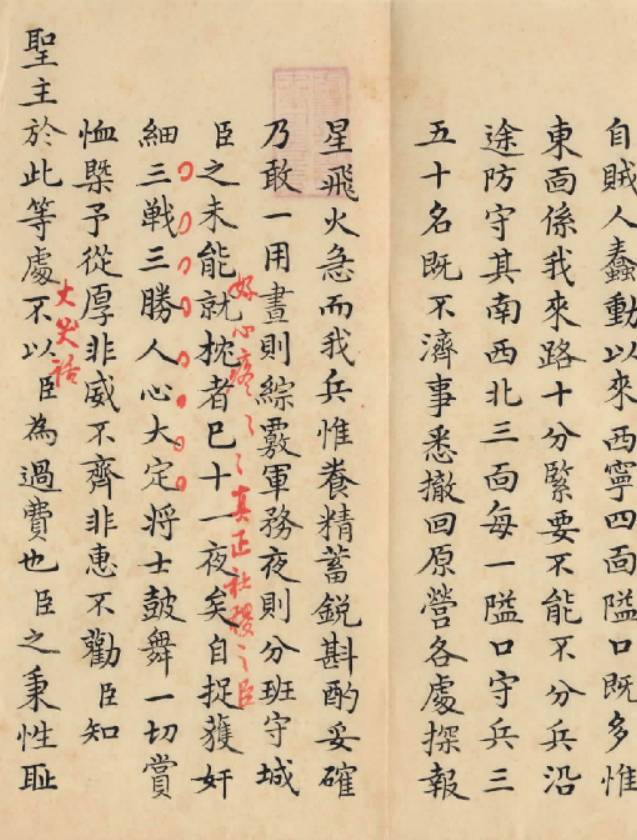
The Yongzheng Emperor
and
Nian Gengyao
Qianlong Emperor
and
The Ministers
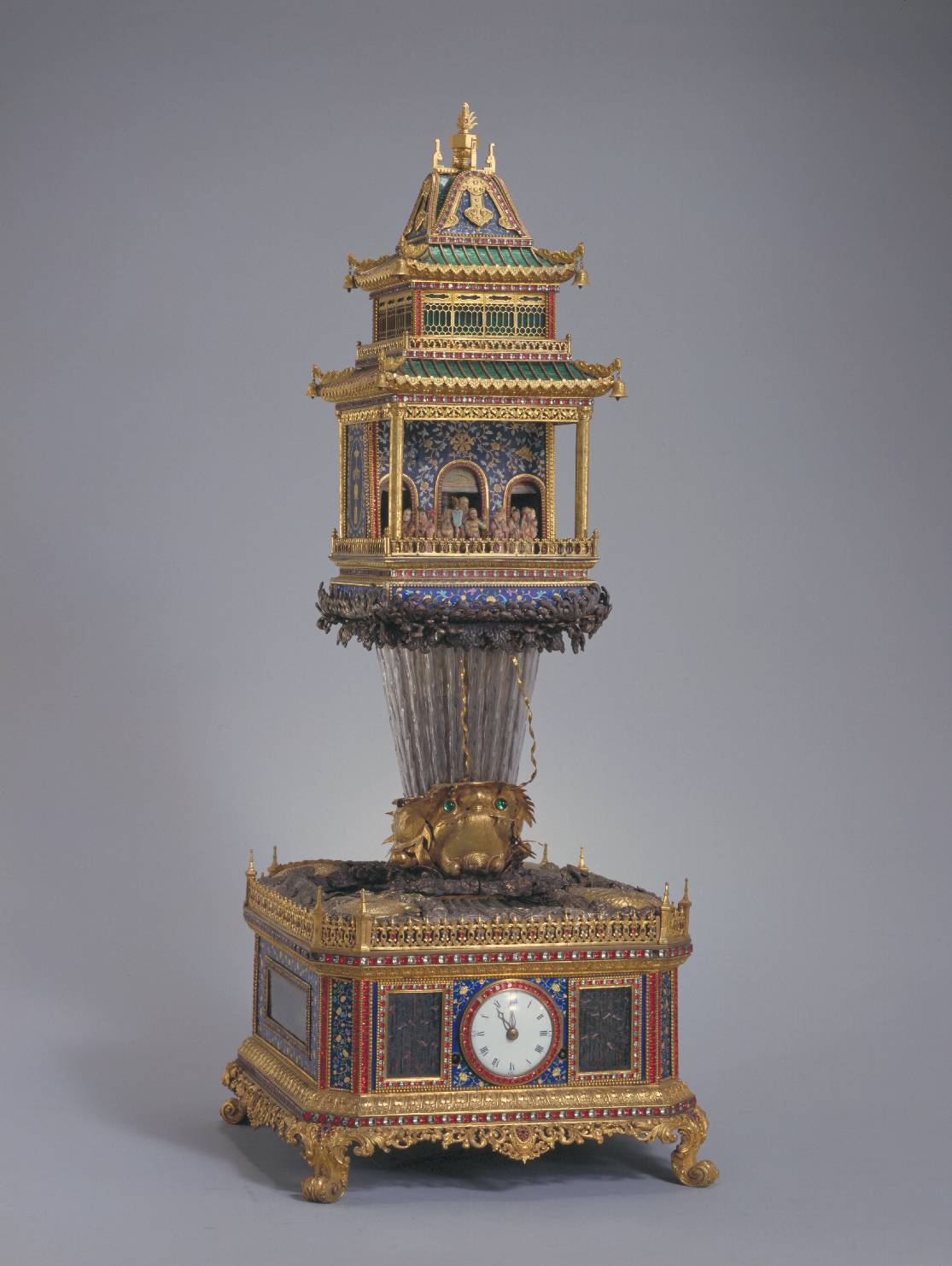
The Yongzheng Emperor
and
Nian Gengyao
Nian Gengyao (1679-1726) was a key official of both the Kangxi and Yongzheng eras. Nian's younger sister was already Yongzheng's secondary consort before he became emperor. Nian was instrumental in Yongzheng's successful accession to the throne, so the new sovereign and his courtier brother-in-law were on excellent terms at the start of his reign. However, Nian grew increasingly arrogant from the imperial favour, and Yongzheng finally ordered his execution. The progressive deterioration in their relationship was discernable from memorials written by Nian and annotated in cinnabar by Yongzheng Emperor over time.
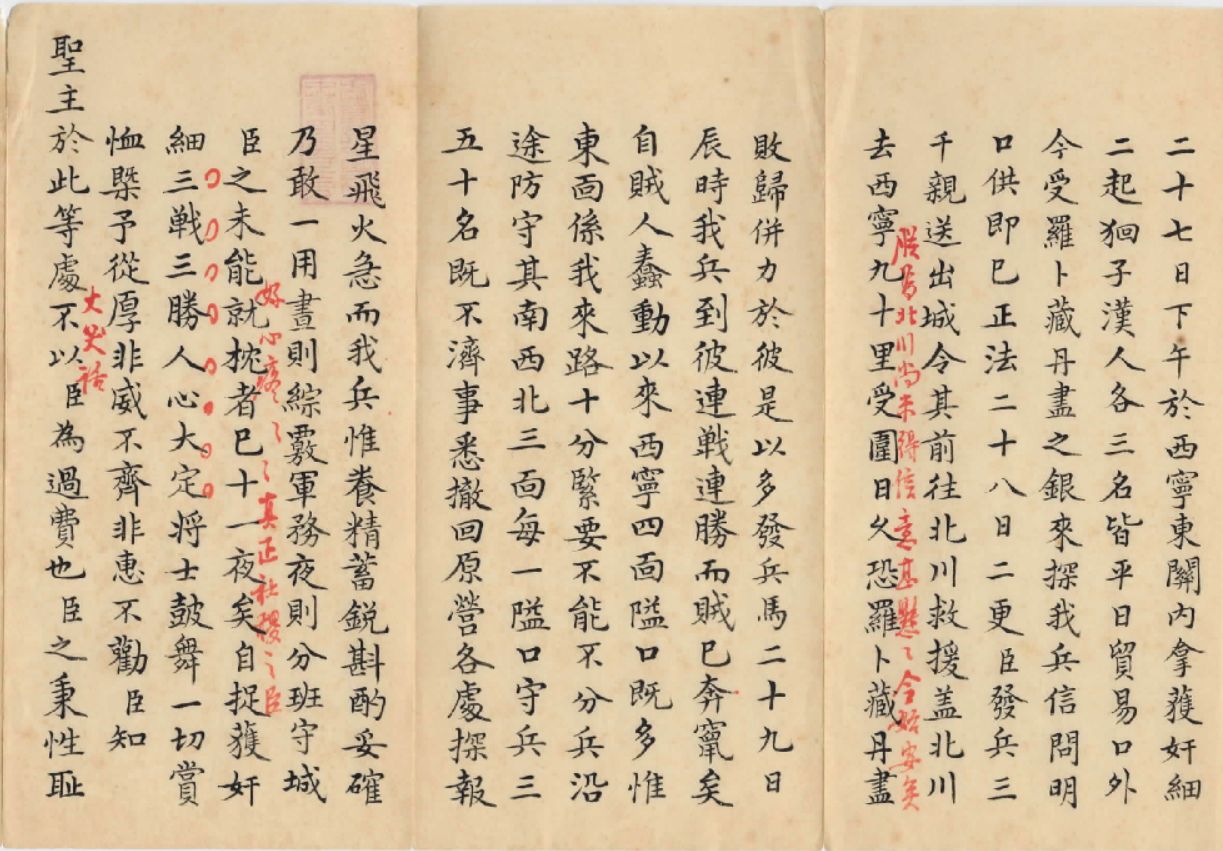
Nian Gengyao's Memorial on the Military Situation in Xining, 1723
From the collection of the National Palace Museum, Taipei
Nian Gengyao wrote: It has been eleven nights since your servant last slept.
The Yongzheng Emperor annotated: Our heart aches! Aches! You are a true official of the state!
Nian: Your servant knows Your Majesty does not deem him a waste of time.
Emperor: Certainly not possible.
Nian: Your servant has lost some weight, but good spirits are normal. Your servant prays Your Majesty is happy, and not worried about him.
Emperor: You are good man, a true fighter. We are somewhat relaxed you are the one bearing the heavy burden, alone. We have nothing to add. Ever since we first heard the news, we could do nothing else but fervently pray to Buddha to keep you safe and bless you with success.
The first two years of Yongzheng's reign (1723-1724) was the "honeymoon" for Nian Gengyao and his monarch. Yongzheng entrusted Nian to oversee matters at the western front. In this memorial from Nian providing an update on the battlefront at Xining, the emperor's response was warm and cordial.


Famille rose ruby ground bowl with panel of flowers and birds, Qing Dynasty
Famille rose yellow ground cup with floral pattern, Qing Dynasty
Provided by the Palace Museum
In the second month of the second year of Yongzheng's reign (1724), Nian Gengyao wrote to thank the emperor for the gift of a famille rose quill, "The famille rose quill is fine in craftsmanship and lush in colour. I like them very much … If there are new famille rose items, please grant me some to satisfy my greed…"
Famille rose ware was very precious at that time. Nian Gengyao asked for it directly from Yongzheng shows that he was in the emperor's favour. After that, Yongzheng gave famille rose ware to Nian several times. In the fourth month of the second year of the Yongzheng period (1724), Nian wrote to the emperor again, "Received on the 22nd day of the fourth month two boxes of famille rose tea cups granted to me… They are refined in colours and elegant in shape."


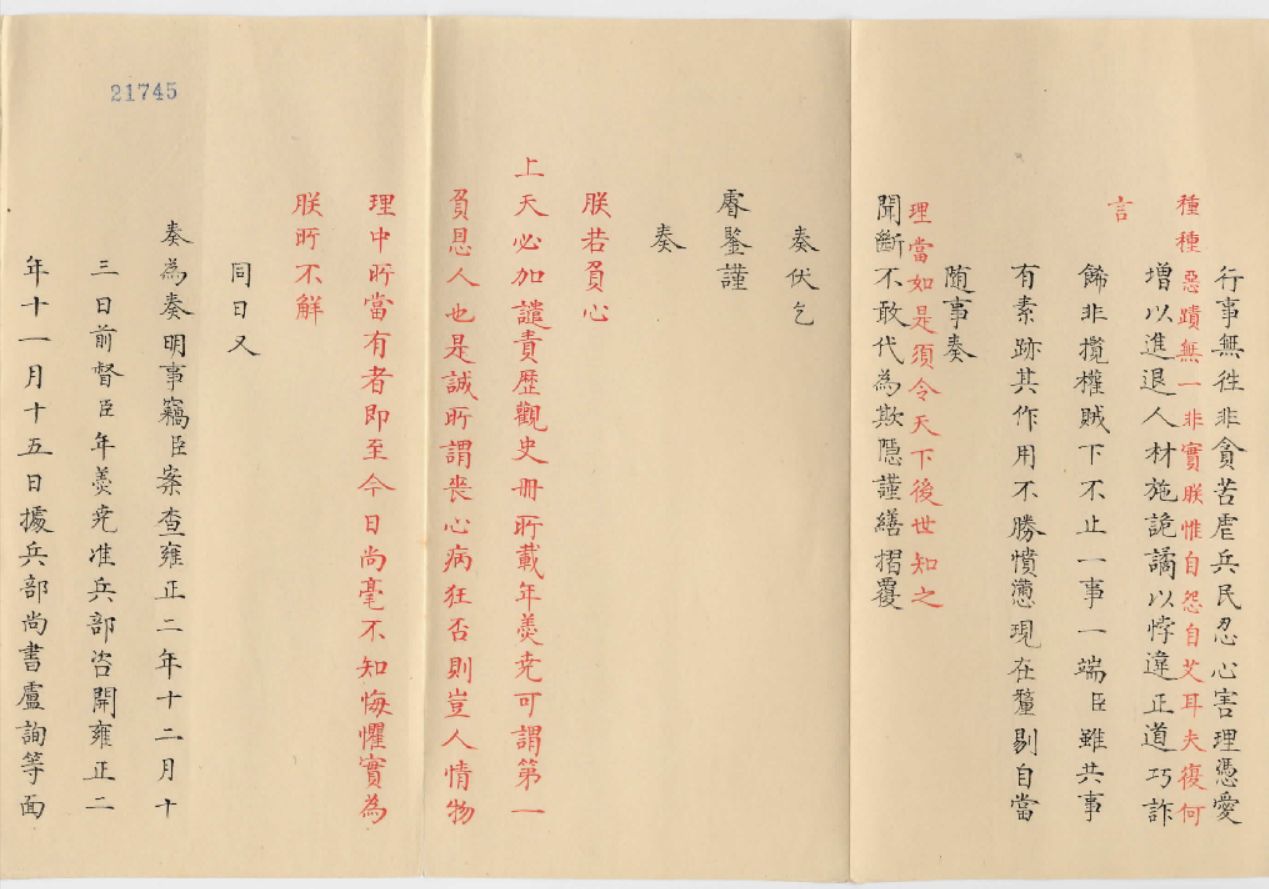
Yue Zhongqi's Memorial on Alleged Misdeeds of Nian Genegyao, 1725
From the collection of the National Palace Museum, Taipei
The Yongzheng Emperor annotated: If we had been faithless, the heavens would have condemned it. Judging from historical annals, Nian Gengyao has to be the most ungrateful person ever lived. He must be a deranged lunatic. Otherwise, we cannot see how anyone in their right mind would behave the way he did. Even now, he is unrepentant and unafraid. It is honestly beyond our comprehension.
Because Nian Gengyao enjoyed imperial favour, his audacity grew. He formed factions for his gain and was extremely corrupted. In this memorial, Yongzheng's displeasure was indicated by his branding Nian "a deranged lunatic" in the memorial of Yue Zhongqi (1686-1754) in the third year of Yongzheng's reign. Eventually, Nian was ordered to commit suicide in prison. His wealth and properties were confiscated, his father and brother were dismissed from their court positions, and his children and grandchildren were sent to fight with the army at the front.

Qianlong Emperor
and
The Ministers
During the Lunar New Year and the birthdays of the emperor and empress, important members of the court would present all kinds of gifts to the emperor. Ministers expressed their respect and loyalty to the emperor by offering local products, treasures, statues of the Buddha, paintings and calligraphy, silks and satins, items of display and furniture.
Qianlong even created sanqingcha (tea of three purities), a tea brewed with pine nuts, plum blossoms and fingered citrons in melted snow. In addition to reciting poetry, the emperor would sing along with his guests to enhance rapport with his courtiers. The Qianlong Emperor would also invite his court to check out the displayed lanterns with him and solve lantern riddles and co-write poems, as a sign of his favour and regard and conveying his desire and hope for harmony and unity among monarchs and courtiers.

Green jade ruyi sceptre inscribed with He Shen's clerical script calligraphy, with inscription of the emperor, Qianlong period, Qing Dynasty
He Shen (1750-1799), a famous minister in the Qing Dynasty, together with his mother, wife and son, made 112 offerings to the emperor during the 19 years of his office from the 42nd year of Qianlong's reign (1777) till his retirement, totalling 1,648 items, meaning 15 gifts every two months. Major items included ruyi sceptres, amitayus paintings, panels, table screens and pouches.


Carved red lacquer treasure box with lid, Qianlong period, Qing Dynasty
Provided by the Palace Museum
This lacquerware is a tribute to the emperor made by Shu Wen, head of the Suzhou Weaving Department, in the 37th year of Qianlong's reign (1772). Apart from taking charge of the weaving industry as directed by the Court, Shu Wen acted as an agent of the emperor in the south, keeping watch and reporting issues relating to officials, general sentiments, weather, agricultural conditions and price of rice. He was also responsible for identifying good artisans for the imperial household.



Turquoise enameled silver stem bowl inlaid with precious stones, Qianlong period, Qing Dynasty
Provided by the Palace Museum
This is a gift from the sixth Panchen Lama of Tibet (1738-1780) to the Qianlong Emperor in celebration of his 70th birthday in the 45th year of Qianlong's reign to express his loyalty to and respect for the emperor. The quality of the gifts also reflected the emperor's control over his ministers and the state of the dynasty. This reflects the control of the Qing court over Tibet.


Screen with zitan hardwood frame inset with painting of the five cardinal relationships, Qing Dynasty
Provided by the Palace Museum
The zitan hardwood frame is carved with patterns of bats and clouds in openwork on top, and forms a carved stand on two sides. It rests on a zitan Sumeru base. The five panels depict landscape, trees, flowers and birds in champlevé enamel, featuring phoenixes, cranes, mandarin ducks, wagtails and warblers, exemplifying the five cardinal relationships of ruler and subordinate, father and son, husband and wife, elder and younger brothers, and between friends.
There are five panels in total, but they look like one single painting when joined together. The item is recorded on a list of incoming items in the records of the Qing imperial household, "On the 29th day of the seventh month of the 40th year of Qianlong's reign (1775), De Bao (1719-1789), the Governor of Guangdong, presented a screen of five panels in zitan hardwood frame inset with enamel painting."


Prunus blossom bonsai, Qing Dynasty
Provided by the Palace Museum
This is one of the four sets of ivory bonsais offered by Yue Jun (?-1753), the Governor of Guangdong, in the 13th year of Qianlong's reign (1748). Prunus blossoms with petals made of stained ivory represent spring and longevity, carrying good wishes for the Qianlong Emperor.


Fan embroidered with flowers and birds in ivory floss, Qing Dynasty
Provided by the Palace Museum
Embroidery inlaid with ivory floss is a special craft of Guangdong much treasured by the imperial court. Officials from Guangdong during the reign of Emperors Qianlong and Jiaqing always offered these precious items for the enjoyment of the imperial household.
This fan is woven from extremely fine ivory silk, with exquisite embroidery of magnolia, peony and a blue jay in ivory and amber.


Gilt bronze clock with enameled immortals, Qianlong period, Qing Dynasty
Provided by the Palace Museum
Rich in resources, the Guangdong area offered a large variety of gifts to the imperial court, including ruyi sceptres, furniture, seasonal fruit and all sorts of gadgets. Guangdong was also the only region in Qing China where foreign trade took place, making it an important channel where clocks and watches were imported.
The Qianlong Emperor liked clocks and watches very much. Officials in Guangdong gauged the emperor's preference based on what clocks and watches he accepted or rejected. Sometimes the emperor would explicitly indicate what he liked. An imperial order was given in the 48th year of Qianlong's reign, "From now on, foreign clocks, large or small, must be beautiful in design. Clocks of such poor quality do not have to be presented."
This clock made in Guangdong was a birthday gift to Qianlong. It was elaborately made by Guangdong officials after figuring out the emperor's interests. Symbolizing longevity, the item is an expression of respect and good wishes for the emperor.


Red glaze cup for tea of three purities, Qianlong period, Qing Dynasty
Provided by the Palace Museum
Qianlong and eighteen of his most trusted nobles and bureaucrats, including Fuheng and Dong Bangda, compiled in Sanqingcha Lianju (Linked Verses of Three Purities Tea). In its preface, Qianlong wrote: "Our beneficence anoints you, like the Spring. With purity of heart, share your thoughts. Praise or flatter not, just have a good time". This indicated that the purpose of the tea banquet was not to extol the emperor's merits, but to enhance rapport with his courtiers; with the expressed hope that relationships would be clear and pure, like water. The volume's concluding verses, also by Qianlong, said: "Law and order is our collective duty, to be discharged with diligence and honesty", encouraging his officials to be loyal and conscientious.



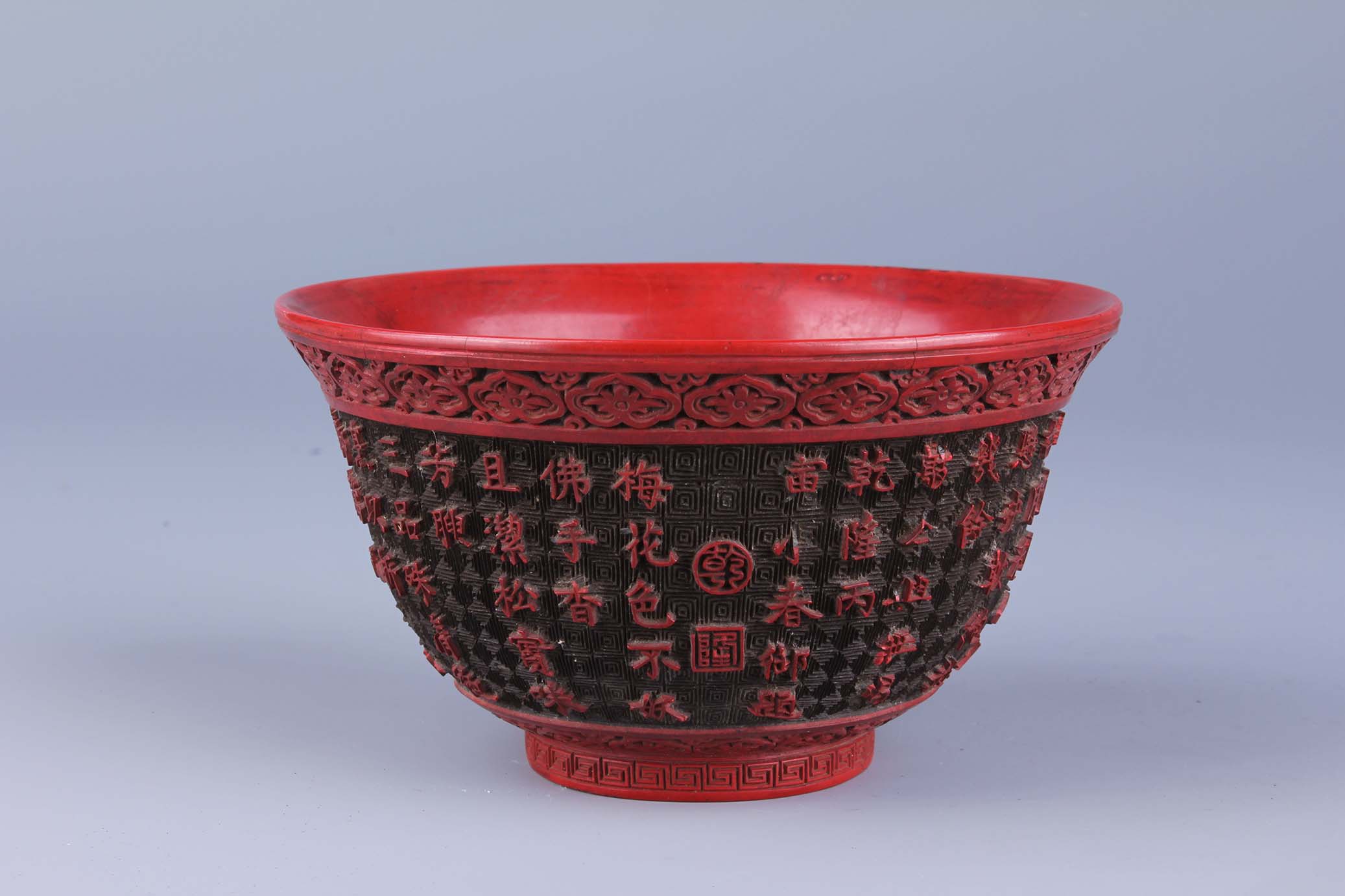
Carved red lacquer bowl with poem by the Qianlong Emperor, Qianlong period, Qing Dynasty
From the collection of Beijing Art Museum
The Qianlong Emperor had ordered cups for tea of three purities to be made with different materials, including ceramics, jade and lacquer. No matter what materials, the inner side of every cup for tea of three purities is painted with pine branches, prunus branches and finger citron. The outer side is inscribed with a poem made by the Qianlong Emperor. The rim and the foot of the cup are decorated with a ruyi pattern.

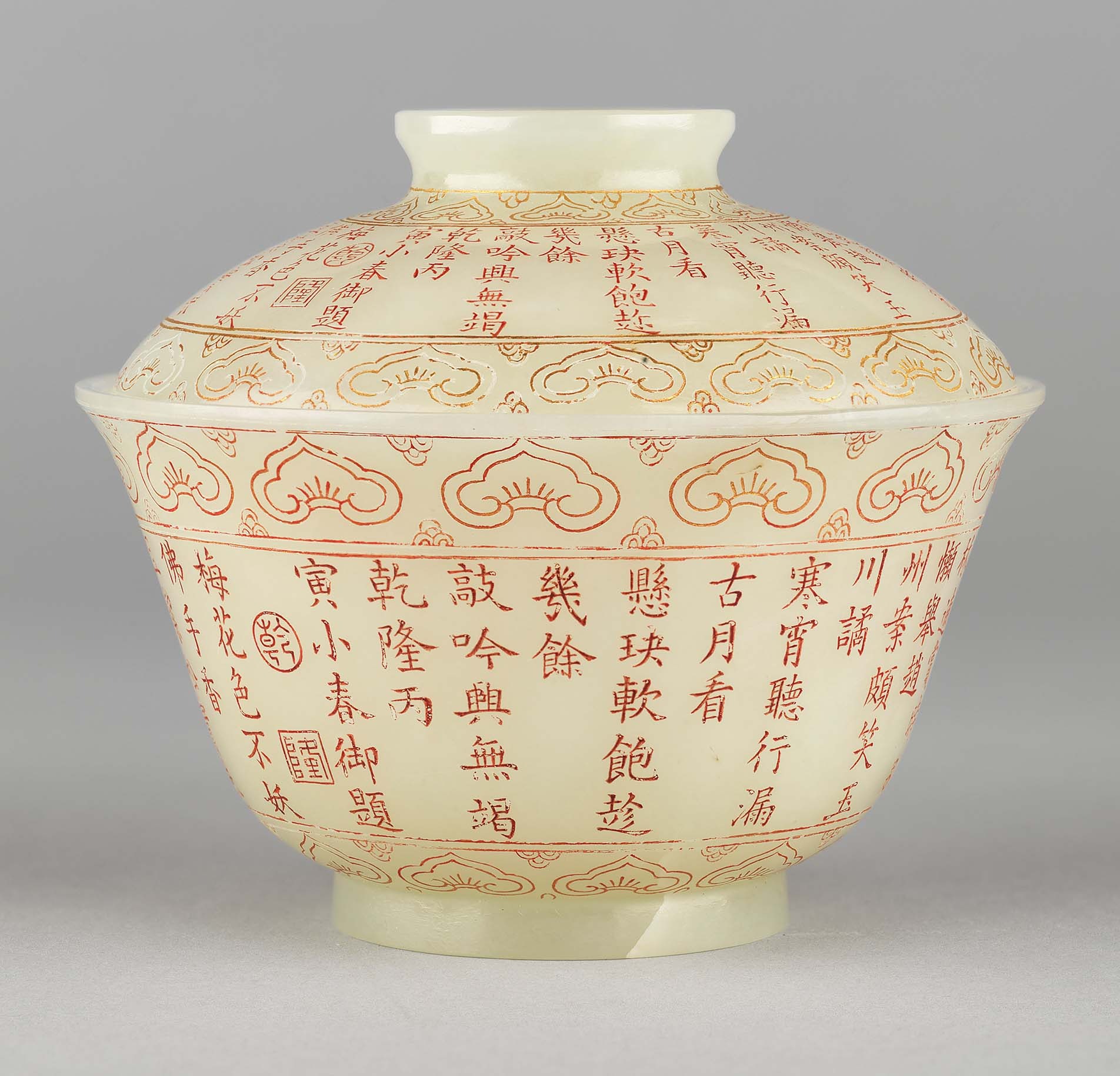
Jade cup with lid, inscribed with poem on tea of three purities by the emperor, Qianlong period, Qing Dynasty
Royal Collection Trust / © Her Majesty Queen Elizabeth II 2021
After a tea banquet, the Qianlong Emperor would give his courtiers pouches, ruyi sceptres, scrolls of painting, duan inkstones, and cups for tea of three purities. The courtiers regarded it a great honour to participate in tea banquets.


Hongli Enjoying a Snow Scene, Qianlong period, Qing Dynasty
Provided by the Palace Museum
The highlight of tea banquets was the collaborative efforts in composing poems by the Qianlong Emperor and his courtiers. Generally, the emperor would set the topic, then everyone took turns to compose four verses, with Qianlong then providing the conclusion. Poetry topics varied widely. One year, suggested by the princes, the topic was "Snow Images". Qianlong began with: "Auspicious snow signals a bountiful year; signs of peace are everywhere". To please Qianlong, Fuheng (1722-1770) followed with: "The sovereign's wisdom bestows auspicious snow". This scroll is depicted by Giuseppe Castiglione et al, recording the happy moments of Qianlong Emperor, princes, and princesses.

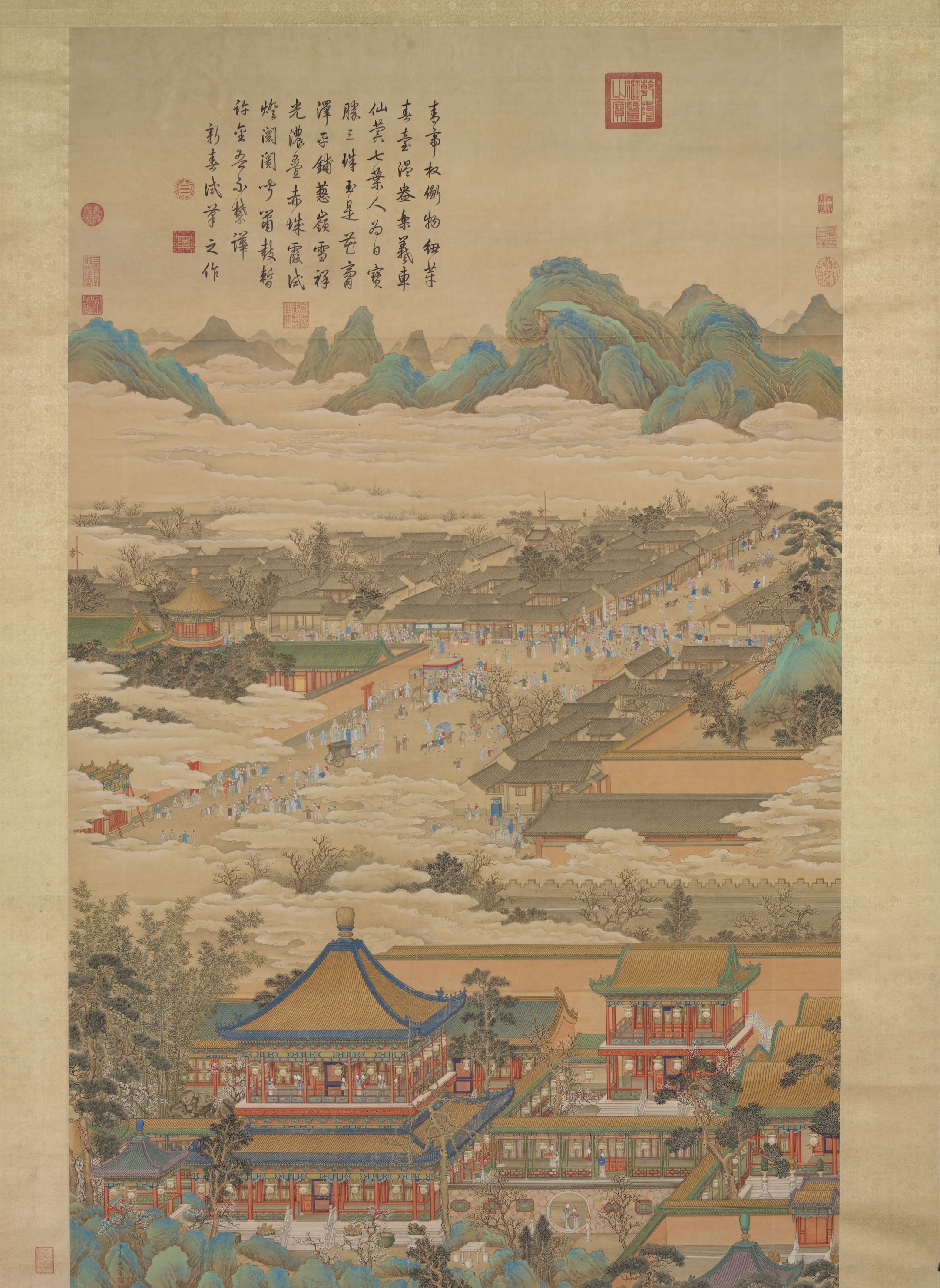
A Peaceful Start for the New Year, Qianlong period, Qing Dynasty
From the collection of the National Palace Museum, Taipei
This painting is painted by Ding Guanpeng (Circa 1708-1771), a "Painter of the First Rank" admired by the Qianlong Emperor, created this painting under imperial orders. Upon its completion, Qianlong inscribed a poem on it which said that noise from the markets was permitted, amid the setting up of lanterns and the sounds of flutes and drums. The emperor was evidently referring to the hustle and bustle depicted in the painting, inside and outside the Forbidden City, a scene associated with preparations to welcome the joyous celebrations of the upcoming Lantern Festival.


Extolment lantern of red lacquer carved wood with painted horn inlay, Qing Dynasty
Provided by the Palace Museum
Such lanterns were produced specifically for the Lantern Festival, and symbolised the celebration of virtuous achievements. They were hung either individually or in a string, and used mainly for remembering one's cherished ancestors. The most special feature of such lanterns was the faceted globe in the lower half. The red-and-gilt lacquer globe was made from the valuable nanmu wood, and protected externally by clear varnish. For each facet of the globe, curling tendrils were intricately carved at the edge, while a horn light plate painted with dragons was inlaid in the centre.


The Lamp for the Lantern Festival
Provided by the Palace Museum
Watch the video to check the special design of the extolment lantern for the Lantern Festival.
<iframe src="//player.bilibili.com/player.html?aid=289434165&bvid=BV1Kf4y147Ew&cid=303059525&page=1&high_quality=1&danmaku=0" allowfullscreen="allowfullscreen" scrolling="no" frameborder="0" sandbox="allow-top-navigation allow-same-origin allow-forms allow-scripts" width="80%" height="700px"></iframe>

Gilt lacquer square gourd lantern with stand, Qing Dynasty
Provided by the Palace Museum
The Chinese name for a gourd is hulu and it sounds like fulu, which means happiness and good fortune. As such, the gourd or hulu is an auspicious term favoured since ancient times. According to records in A History of the Palace – Sequel, heaven lanterns and longevity lanterns hung in the Palace of Tranquil Longevity were the same as those at the Palace of Heavenly Purity. Therefore, during the New Year season, it was highly probable that the auspicious gourd lanterns were also used at the two Palaces, together with longevity lanterns. Apart from that, gourd lanterns were also used during other festivities and as everyday furnishing.


Boys Holding a Fish hanging lantern, Qing Dynasty
Provided by the Palace Museum
The frame of this lantern was constructed with metal wires, and gauze was used to form a four-sided shade over the frame. Painted on the shade's two broader sides were two small boys holding onto a fish, while bats featured on the two narrower sides. Fish symbolised a bountiful year and bats represented abundant blessings. Therefore, these animals had auspicious meaning, and the gorgeous colours were lively and suitably festive. This lantern catered to the lantern-watching custom during the Lantern Festival, which fell on the 15th day of the first lunar month of the year.


Dark jade bound compilation of Lantern Festival poems by the Emperor, Qianlong period, Qing Dynasty
Provided by the Palace Museum
During the annual Lantern Festival, the Qianlong Emperor would compose poems and ballads with his courtiers, reciting and singing along with them. The hundreds of co-written poems from those coveted grand events were compiled and bound into a volume to serve as a record, for posterity, affirming the virtuous benevolence of the emperor.








